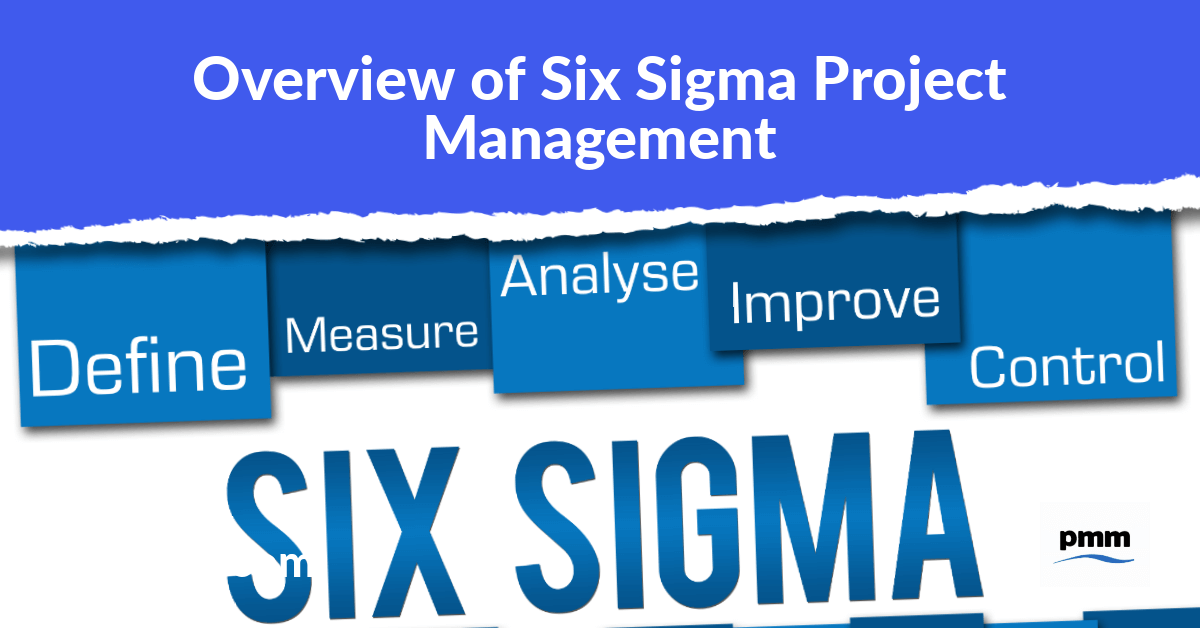What is Six Sigma?
Six Sigma is a methodology which aims to improve output quality and eliminate defects from the production process.
It was initially developed by Bill Smith, an Engineer at Motorola in 1986, but became more popular within the wider business world when Jack Welch of General Motors built it into his business strategy around 10 years later.
Features of Six Sigma
Whilst other methods to improve processes exist, Six Sigma differs in three ways:
- Financial returns that are quantifiable and measurable are at its focus.
- Leadership is essential.
- Decisions are made by analysing data and statistics, rather than assumptions.
Six Sigma process
The DMAIC Roadmap is the main tool used in Six Sigma. It follows 5 steps and offers a more flexible, scientific project management process.
Define
The business problem, goal, resources, scope and timeline for completion is defined and detailed in the project charter. What is known about the project, work-related facts, objectives and details of the project team is collected.
Measure
The project baseline is established to measure process improvements. Work is put into context by collecting appropriate data and the team determines what will be measured and how.
The performance of this system is dependent upon the quality of data gathered.
Analyse
To eliminate problems in the process, you will need to identify what is preventing progress using the data collection plan. To do this you will list and prioritise possible causes of the problem and identify how inputs impact output processes. From this a detailed process map will be drawn-up.
Improve
Once the problems have been identified you will test and implement possible solutions, which will remove the possibility of the problem reoccurring.
Solutions are shortlisted, with the simplest being prioritised. Once they have been tested inherent risks have been identified, an implementation plan can be created to make improvements.
Control
A control plan should be created to monitor the improvements and ensure that they are sustainable. This should be updated as necessary.
Advantages and Disadvantages of Six Sigma
Advantages
Improved customer satisfaction and loyalty
Processes are improved which results in better quality control and inevitably, a better product, ensuring that customers are satisfied and will make repeat purchases – providing quality remains consistent.
Increased revenue
Satisfied customers not only make repeat purchases but are more likely to recommend your product to others, resulting in more sales.
Strategic planning
It can work in line with a SWOT analysis to focus on weaknesses and improve them, rather than focusing on what the company does well. Weaknesses can then be turned into strengths.
Employee satisfaction
Six Sigma requires commitment from all members of an organisation to work towards a shared cause. Employees will be more motivated, and their productivity will increase as they see that they are making a difference to the cause.
Lower cycle time
Team members across the organisation are tasked with identifying problems that impact on the process. Once they have been rectified, a shorter cycle time will be achieved.
Disadvantages
Rigidity
Six Sigma isn’t a one-size-fits-all methodology and may reduce flexibility in unique projects. Creativity can be discouraged by constant refinement, and innovation is seen as a deviation in the process.
Automation
Focussing on the automation of refining the process doesn’t consider the human aspect of projects and how they work through and impact obstacles.
Applying Six Sigma in reality doesn’t take into account real time problems and barriers that need to be resolved.
Costly to implement
To implement Six Sigma properly, there must be a buy-in from all employees. The cost of upfront training and the time involved, to get everyone up to speed therefore is high compared to other methodologies.
Some environments may require a certified Six Sigma practitioner which may not be practical or cost effective.
Lacks identity
Critics view Six Sigma of being a repackaged version of Toyota’s continuous improvement module, Kanban and as such, lacks its own identity.
Why should you choose Six Sigma?
You may think that Six Sigma relates primarily to manufacturing processes, however, if you need to develop efficient processes to complete your project then you can use Six Sigma regardless of your industry.
There are 3 main reasons for choosing Six Sigma:
- Striving to achieve a process which is stable and predictable contributes to business success
- Characteristics of the process are definable and measurable, meaning that they can be analysed to control and improve them.
- To sustain and achieve quality improvements the whole organisation must show commitment.
How can Six Sigma help Project Management?
Six Sigma differs to Project Management in that it is a long-term commitment to a whole process and aims to fine-tune performance. Project Management on the other hand identifies how each individual stage of the process is performing and seeks to improve those that are weak.
That is not to say however that you can’t incorporate Six Sigma into your project management. Whilst there are specific terms of application when using Six Sigma as it was specifically designed, you can choose and adapt aspects of the methodology to suit your project.
The most important question to answer therefore is, “Does this methodology provide a good fit for my project?”
If the answer is yes, then it may prove more beneficial to incorporate Six Sigma onto your current method, as introducing a brand-new methodology may result in significant workplace changes as the project focus shifts from individual phases to a whole project approach.






